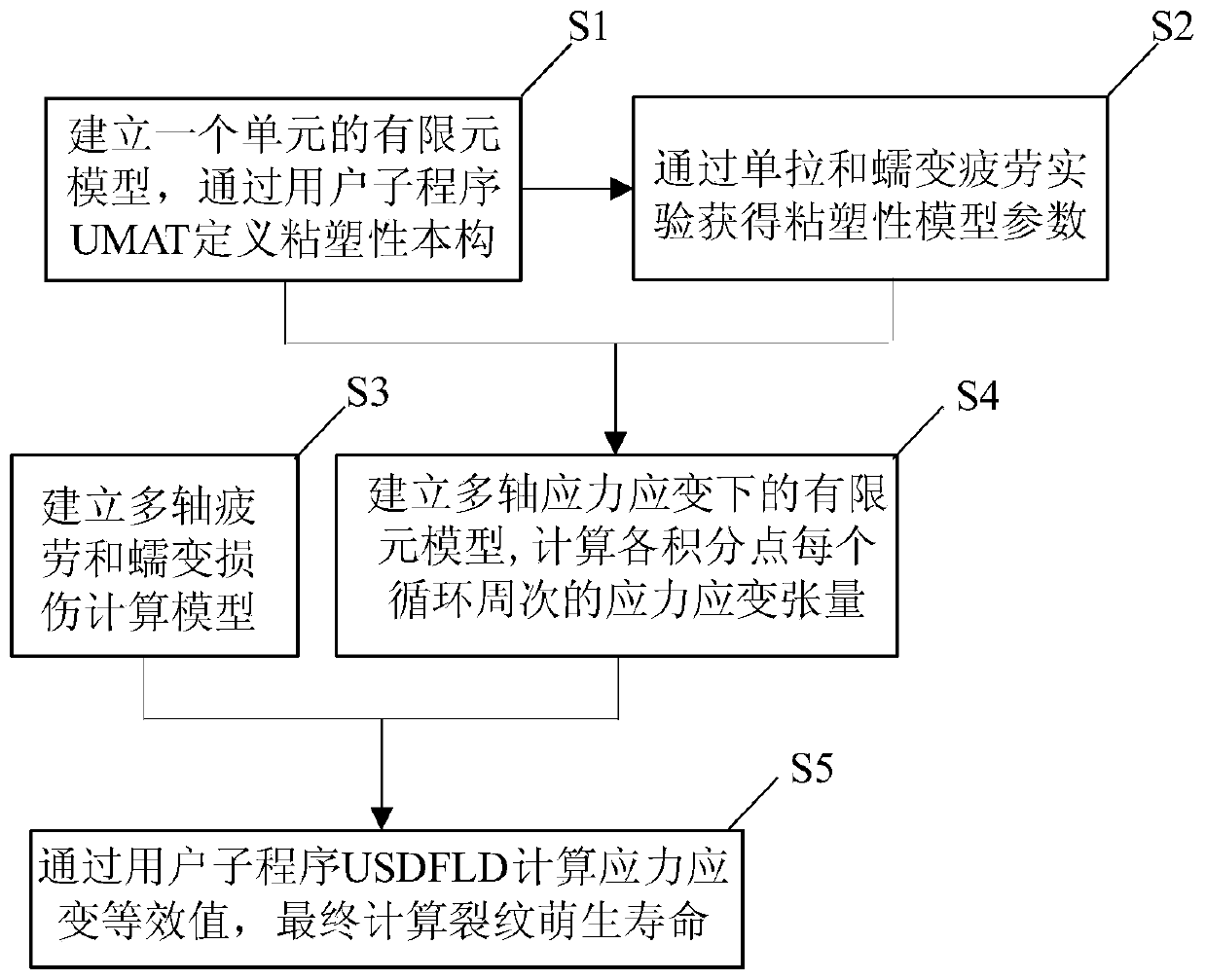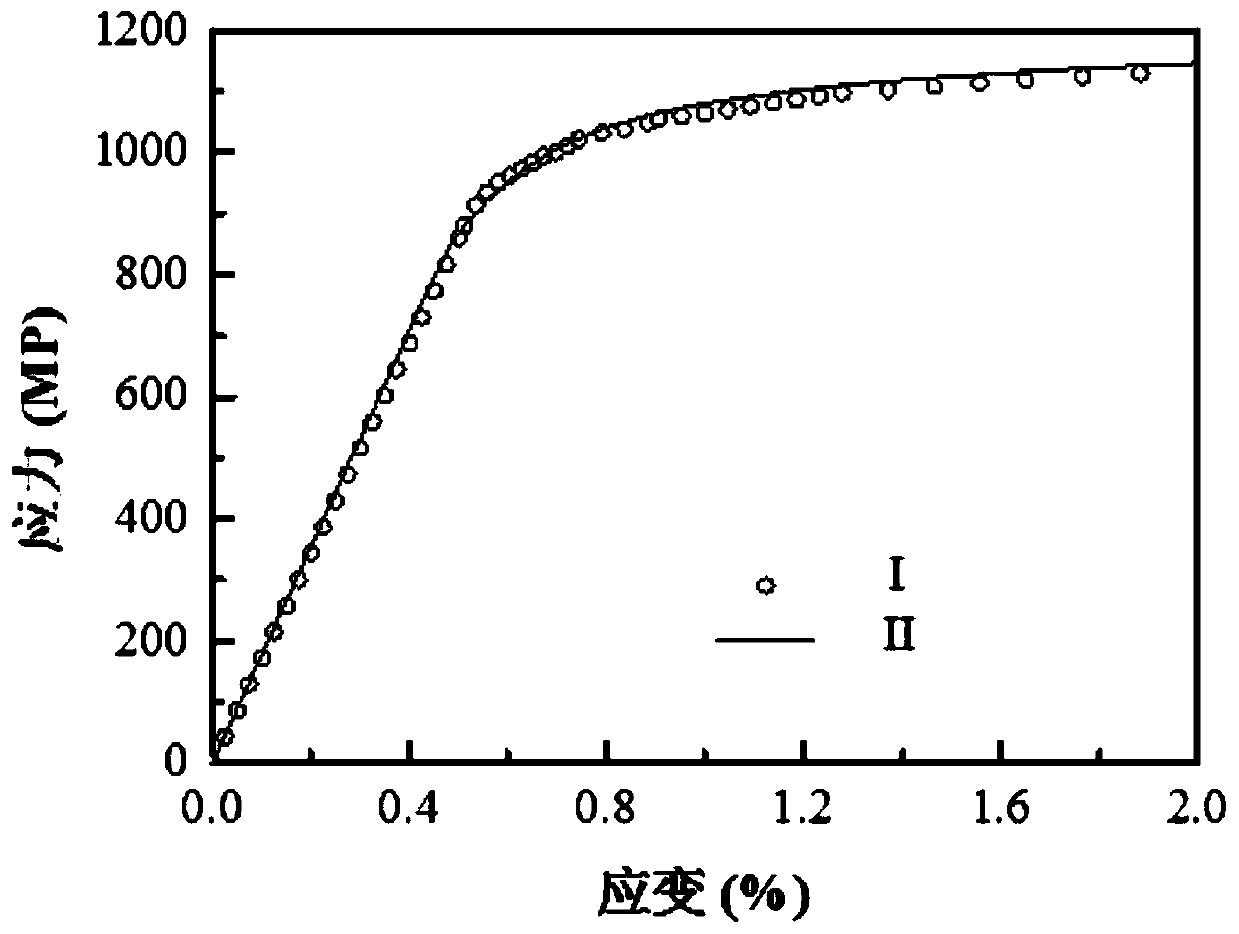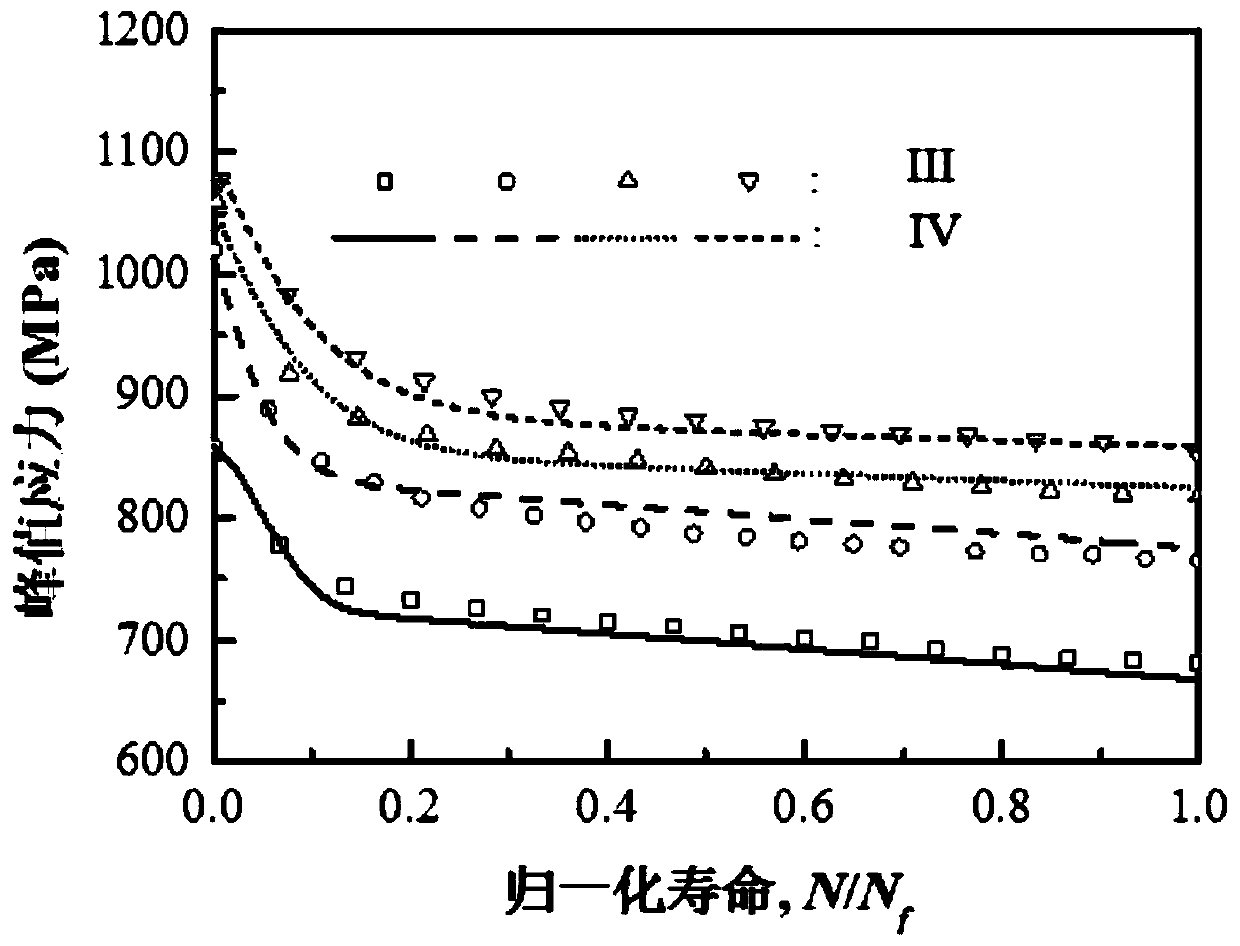A multi-axis creep fatigue prediction method based on ABAQUS
A prediction method and creep technology, applied in the direction of using stable tension/pressure to test material strength, measurement device, knowledge expression, etc., can solve the problems of inaccurate creep fatigue analysis and prediction, poor convergence, complex programming, etc.
- Summary
- Abstract
- Description
- Claims
- Application Information
AI Technical Summary
Problems solved by technology
Method used
Image
Examples
Embodiment Construction
[0066] The ABAQUS-based multiaxial creep fatigue prediction method of the present invention will be further described in detail below in conjunction with the accompanying drawings and specific embodiments.
[0067] figure 1 It is a flow chart of the ABAQUS-based multiaxial creep fatigue prediction method in one embodiment of the present invention.
[0068] Such as figure 1 As shown, in this embodiment, the ABAQUS-based multiaxial creep fatigue prediction method includes steps:
[0069] S1: Establish the ABAQUS finite element model, and define the viscoplastic constitutive equation of the material to be tested in the process of cyclic loading through the user subroutine UMAT;
[0070] S2: determining the model parameters required by the viscoplastic constitutive equation;
[0071] S3: Establish a fatigue damage calculation model and a creep damage calculation model of the multiaxial stress-strain state of the material to be tested;
[0072] S4: Establish the ABAQUS finite e...
PUM
 Login to View More
Login to View More Abstract
Description
Claims
Application Information
 Login to View More
Login to View More - R&D
- Intellectual Property
- Life Sciences
- Materials
- Tech Scout
- Unparalleled Data Quality
- Higher Quality Content
- 60% Fewer Hallucinations
Browse by: Latest US Patents, China's latest patents, Technical Efficacy Thesaurus, Application Domain, Technology Topic, Popular Technical Reports.
© 2025 PatSnap. All rights reserved.Legal|Privacy policy|Modern Slavery Act Transparency Statement|Sitemap|About US| Contact US: help@patsnap.com



